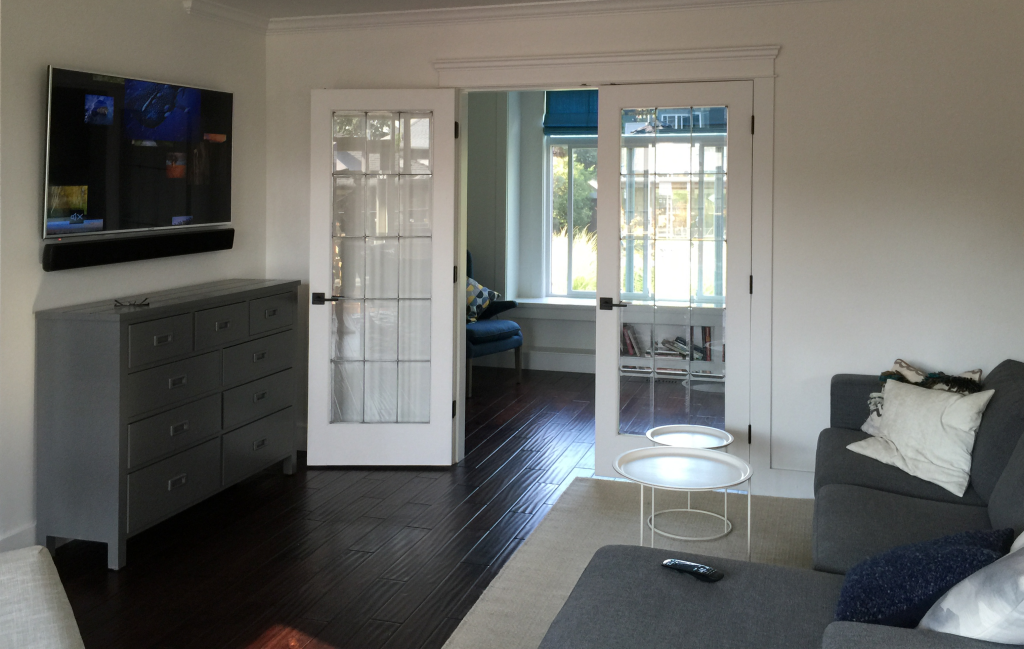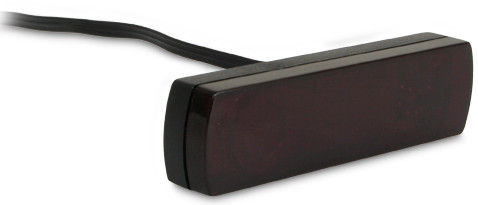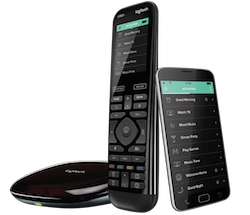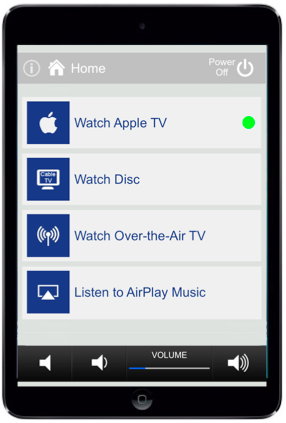
Most people want to hide technology so they don’t see their home’s audio and video gear. You need to see the TV while you’re watching it, but other gear can be hidden in a cabinet or closet. The good news is that there are ways to control the hidden gear – these include IR repeaters, universal remotes with hubs, and control systems.
We first need to understand how audio and video gear is controlled. Most devices like TVs, cable boxes, AV receivers and blu-ray players use IR remotes. IR, or infrared, is light that we can’t see that is used to carry control signals. Some higher end devices like TVs and AV receivers can also be controlled with a serial port. This is a special communication port that gives full control of the device. More and more devices are also including control using your home’s computer network as well. Some devices can also be controlled with wireless technologies like Bluetooth. For example, Sony only allows the PS4 to be controlled by their Bluetooth remote or game controllers.
An IR repeater is a simple and affordable way to get the IR signals into a cabinet. These require a sensor somewhere outside the cabinet that receives the signal, and then the signal is sent to one or more IR transmitters (IR LED lights) inside the cabinet. Usually these work best for a simple system like just a cable box hidden away. Not all IR signals are the same, so some may not be properly repeated  inside the cabinet. The gear can’t be too far away either, as repeaters aren’t made to cover long distances. Although quite small, you also need to find a place to put the sensor that isn’t an eyesore in the room. Finally, of course, these will only work with IR controlled devices.
inside the cabinet. The gear can’t be too far away either, as repeaters aren’t made to cover long distances. Although quite small, you also need to find a place to put the sensor that isn’t an eyesore in the room. Finally, of course, these will only work with IR controlled devices.
The next step up is to use a universal remote that includes a hub or base station that is placed inside the cabinet. With these remotes, such as the Harmony Ellite, the remote uses a wireless radio signal to talk to the hub, and the hub then sends the IR signals. These systems will allow for equipment placed a bit further way, but its best to keep  components within the same room. It should be noted that IR is one-way control. An IR remote has no knowledge if your TV has turned on or is set to the right input for example, so some of these remotes have help features to fix issues when hiccups like these happen. These types of remotes often include control for smart home products like Sonos and Lutron Caseta as well.
components within the same room. It should be noted that IR is one-way control. An IR remote has no knowledge if your TV has turned on or is set to the right input for example, so some of these remotes have help features to fix issues when hiccups like these happen. These types of remotes often include control for smart home products like Sonos and Lutron Caseta as well.
If you want complete control, then you can choose a home control system such as an RTI system. These powerful systems can take the complication out of a TV room, an elabourate home theatre or smart home to make it easy to operate. You can choose to use hand-held remotes, smartphone or tablet apps, wall touchpads, or any combination of these controllers. These offer two-way control of  many devices using a serial port or network connection, so it can determine if devices (like your TV) are on, and all the components are set to the right input, etc. While IR repeaters and many universal remotes are good for a do-it-yourselfer, you’ll need a professional to set up a home control system. It can even be setup to run things like lights and heat without you needing to do anything.
many devices using a serial port or network connection, so it can determine if devices (like your TV) are on, and all the components are set to the right input, etc. While IR repeaters and many universal remotes are good for a do-it-yourselfer, you’ll need a professional to set up a home control system. It can even be setup to run things like lights and heat without you needing to do anything.
You have options if you’d like to hide technology out of sight. Tech is always changing, so not all control options will control all devices. If you’re handy, maybe you can set up a IR repeater or universal remote yourself, or maybe your want a professional to figure out what will work and set one of these up for you, Whatever you choose, make sure that there is adequate ventilation or fans to keep your gear cool as electronics can get hot. As always, let us know if you’d like a hand getting the right solution set up for you.
